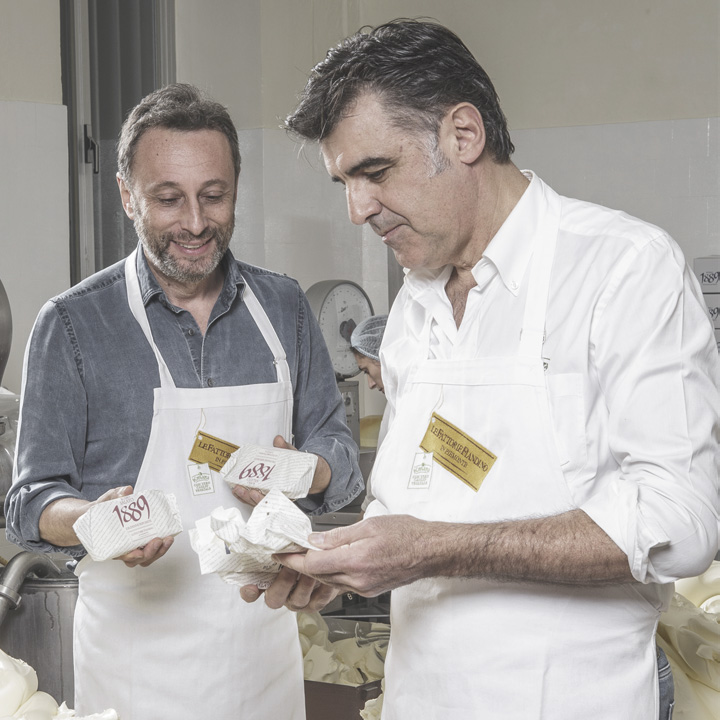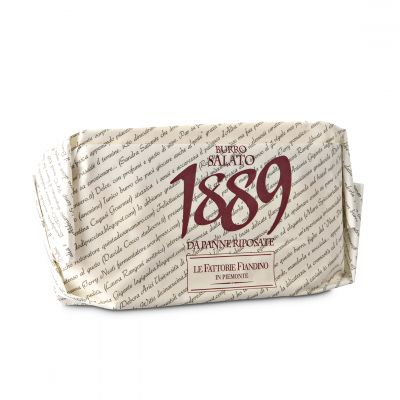
The product
Burro 1889 salato Fattorie Fiandino
Salted butter from cream obtained by centrifugation, in a 100 g pack
Code:
2086
Country of origin:
Italy - Piedmont
Weight:
100 g
Minimum order:
1 piece
| Description | Pasteurised cream obtained with centrifugation of piedmontese cow's milk enriched with salt from Culcasi di Nubia salt pan, in Sicily |
|---|---|
| Appearance | Creamy and spreadable, it is white in colour with salt crystals inside |
| Taste | The sapidity is never excessive and leaves room for intense lactic sensations and notes of almond |
| Curiosity | The name of the butter '1889' represents the year of birth of grandfather Magno, progenitor of Fattorie Fiandino |
| Suggestions | Excellent for sautéing vegetables, for cooking potatoes, but even more for preparing croutons |
| Ingredients | Centrifuged and pasteurised cream from MILK, sea salt from Trapani (<2%) |
|---|---|
| Allergens in ingredients | Milk and products thereof |
| Weight | 100 g |
| Packaging | Wrapped in food parchment paper with safety rivets |
| Storage Conditions (packaged products) | Keep at +1 +6 °C |
| Country of origin of the primary ingredient | Italy |
| Nutrition Declaration | Energy: 2991 kJ / 727 kcal Fat: 80 g of which saturates: 47 g Carbohydrate: 1 g of which sugars: 1 g Protein: 0,8 g Salt: 1,2 g Typical value per 100 g |
The producer
Fattorie Fiandino - Villafalletto (CN) - Piedmont

Why we chose them
In the eighteenth century Stefano Fiandino began the Fiandino's dairy tradition in Cuneo. Stefano was a Milan breeder and dairyman who decided
to
move to Demonte to continue the agricultural activity. Several generations were succeeded keeping dairy vocation up to the Great Grandfather,
the
beginning of the twentieth century moved the business to Villafalletto where farms are still located. But it is precisely with Egidio and Mario that
there
was a change. When we met the two cousins were very impressed by the enthusiasm that they put into their projects. We were won over by their
butter, the 1889. But it has also affected us their desire to be known also through a vegetable rennet cheeses line. Cheeses identified by Kinara
mark · Greek translation about Cynara cardunculus · cardoon used to get rennet. In fact the Kinara method involves the use of vegetable rennet
instead of animal rennet.






